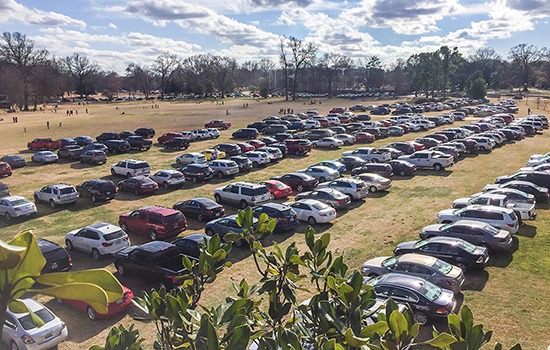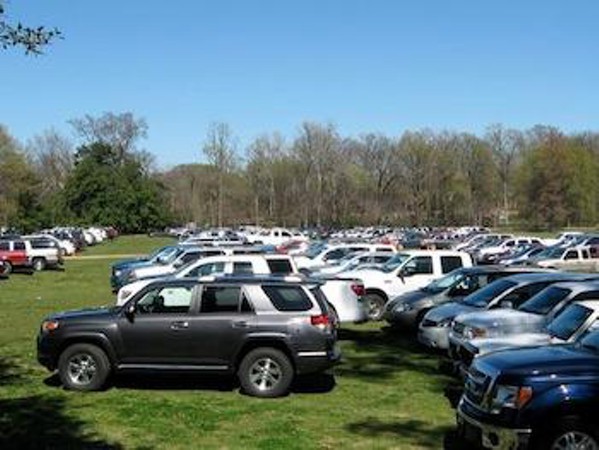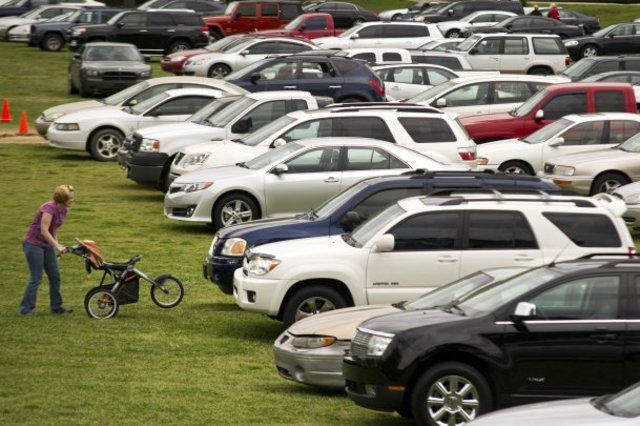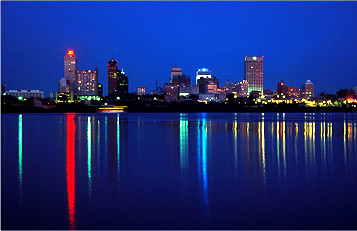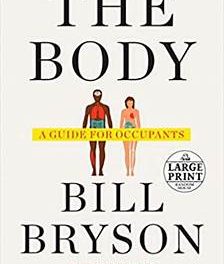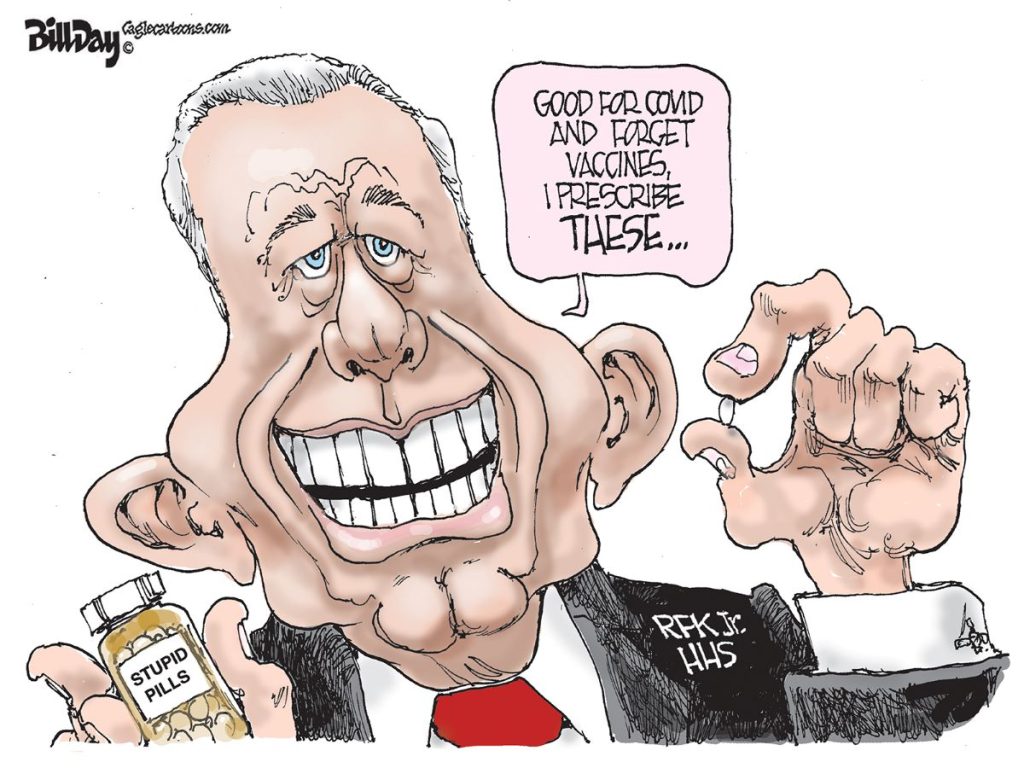We’ve been revisiting the 15 most read blog posts of 2016. We’ve previously posted #6-10 and #11-15. Thanks again for your support for the past 13 years.
The following are the top 5 blog posts. It’s worth noting that three of the top five most read blog posts, an indication of the broad-based public interest about this issue and the strong support for protecting the greensward:
#5: Carol Coletta’s Message For Modern Memphis – March 8, 2016
“We have to get more people to choose Memphis as home while also – at the same time – improve the circumstances for the people who live here. This is important: It’s not enough to do one without the other. We have to do both simultaneously.”
This was Carol Coletta’s call to arms at last week’s Leadership Memphis annual luncheon. We should listen, not just because she’s one of the country’s most respected authorities on what makes cities successful, but because she’s a Memphian who cares deeply about her city and its future.
Her formula for success for Memphis: talent, opportunity, connections, and distinctiveness.
She set the stage with statistics about the Longview Heights neighborhood in South Memphis where she grew up. It had a population of 70,000 people in 1970 with a poverty rate of 39%, but today, its population is fewer than 25,000 people and a poverty rate of almost 50%.
“The shift in South Memphis mirrored what happened not just in the City of Memphis, but in the entire metro area,” she said, adding that in 1970, there were 94,000 people living in 42 high poverty census tracts and that has almost doubled to 78 census tracts today holding 104,000 people in poverty.
To reverse these trends and set Memphis on a better path for the future, she said the keys are a combination of education and quality of life.
“The best indicator of a city’s per capita income is the percentage of college graduates in its population, and that is getting more, not less, true,” she said. “Improving outcomes for any Memphian improves opportunity for all Memphians, because, it turns out, that education is a public good. We all have more economic opportunity when the people in our community have more education. Education is any city’s best economic development strategy, but if we educate our citizens and then they take their talents elsewhere, that’s a problem. If we can’t attract talent from elsewhere, that’s also a problem.”
To attract and retain talent, Memphis has to create a quality of life that is a magnet that holds and brings people to Memphis. “Livability is not a nice thing to do once you’ve done everything else,” Ms. Coletta said. “Education and livability are both essential to grow the talent we need in Memphis.”
A successful Memphis is a place where “we all have the opportunity to develop all of our talent and put all of our talent to work.”
Today, too much opportunity is wasted: 180,000 Memphians living below the poverty line, just 1% of local business receipts goes to black-owned businesses, just 2% goes to women-owned businesses, millennials and newcomers can’t get a seat at the civic table, and “when hiring is limited to who’s in your social circle,” she said.
“This kind of performance doesn’t just limit the potential of the Memphians directly affected. It limits the economic possibilities for all of us and our city. We simply cannot afford to let any talent go to waste in Memphis for lack of opportunity.”
Referring to the Blueprint for Prosperity, she said: “There exists a breathtakingly specific and smart plan for reducing poverty by 10 percentage points in the next decade. As its author said to me, the work that most needs doing is in the places where people most need work. How convenient.
“Imagine what would happen if in the next 10 years, we could reduce poverty from 27% to 17% in Memphis. That’s 64,000 Memphians newly able to put their talent to work. It’s time for us to get as innovative on access to opportunity as we are becoming in Memphis on talent development. That’s a moon mission worth tackling.”
Read more here.
#4: Long-Term Zoo Parking Solutions Ignored For 27 Years – May 1, 2016
Memphis Zoo opened its Zambezi River Hippo Camp a few days ago, and we were reminded once again of the incredible transformation that the Memphis Zoological Society has led in turning a pleasant, well-loved local zoo into an important regional zoo with national aspirations.
The zoo’s evolution over the past two decades came from its stated focus on planning, smart design decisions, and customer experience. That’s what makes the abandonment of all of the same priorities when it came to parking simply incredulous.
It’s not possible to visit the Zambezi River Hippo Camp, or the zoo at large, without coming face-to-face with the dramatic dichotomy that exists between what was done by the zoo inside and outside the facility. To imagine that all of the improvements to the zoo were proposed and approved, money raised to pay for them, and the complex constructions completed without anyone discussing a long-range parking solution simply defies credulity.
The people on the Zoo board are some of Memphis’ leading and most successful citizens. Within their companies, it’s hard to imagine that if their staff had failed to raise a question so fundamental to their missions, they would still be employed. That’s why it’s so hard for most people to imagine that as more and more exhibits drawing more and more people were being discussed, parking was simply ignored.
Perhaps, board members simply assumed that the most popular heart of the park – the greensward – would always be a parking lot, but even accounting for changing attitudes toward parkland and the growing evidence of its importance in the economic success of cities, it’s unthinkable that no one at the zoo was imagining – or talking with City Hall – about what could be done to get cars off parkland.
There were early warnings that failed to get attention, such as increased numbers of park users drawn by the burgeoning fitness and outdoor recreation movement, and by concerts, art exhibits, and special events, all of which were accelerated by improvements by the Overton Park Conservancy turning the park into an even more cherished and valued civic amenity.
Meanwhile, it’s an indictment of City Hall thinking that over more than 20 years of new, grand zoo plans, no one in the mayor’s office got serious about how the pressure for more parking would be handled. It took new mayor, Jim Strickland, to set up a mediation process, which he reported last week is making progress toward a long-term resolution of these issues.
Hopefully, Memphis City Council can resist the impulse to inject itself again in an issue that requires diplomacy and open lines of communications rather than political haymakers aimed at giving the zoo the upper hand.
Here’s the thing, the contract between City of Memphis, Memphis Park Commission, and Memphis Zoological Society was signed 27 years ago. It was signed on behalf of city government by Mayor Dick Hackett. In other words, it was signed for a different city and for a different time. Unfortunately, the Park Commission was eliminated during the administration of Mayor Willie W. Herenton and parks were at that point relegated to just another service in a long list of city services and without the advocates that had created one of the best park systems in the country.
If the Park Commission had continued to exist, its track record would suggest that it would have identified parking as an issue requiring serious thought and decisions. That said, it already appears that the tone is changing with some members of the Council who are asking more questions about the contract with the zoo, respective responsibilities, and why zoo funding has climbed at a time when lack of funding resulted in declining condition of other public buildings such as community centers.
The zoo does appear to have gotten special attention in city budgets over the past decade. Generally speaking, nonprofit organizations that have taken over management of city assets – think Riverfront Development Corporation, Memphis Botanic Garden Foundation, and Memphis Brooks Museum of Art Inc. – enter into contracts that guarantee city funding at the same level that existed when the agreement was signed.
As a result, the level of city funding for these management organizations remains roughly the same (although some have actually been reduced). It is a curiosity of zoo funding that it is 62% higher today than it was 10 years ago.
Read more here.
#3: Zoo Digs Up More Greensward Parking Controversy – January 18, 2016
The line between being a highly regarded, trusted organization, company, or government and one that isn’t can be thin and fragile.
It’s surprising how often we see an organization cross that line, and that seems to be what the Memphis Zoological Society has done.
But more than a feeling of surprise, we are left feeling sad at how cavalierly it has put at risk more than a century of good will that existed for one of the city’s most visited and most-loved attractions.
It’s hard at this point to even struggle to find a justification for the Zoo’s latest action – removing 27 trees in the Overton Park Greensward. It was an action that suggested that the Zoo now sees its disagreement with the Overton Park Conservancy as a ground war. That said, the Zoo lost the high ground a long time ago.
From its ham-handed public statements trying to explain its latest faux pas to thumbing its nose at all the people who want Overton Park to be a park rather than a parking lot, the Zoological Society has managed to lose the support of many employees, former employees, retirees, longtime members, neighbors, and civic activists.
If it were not for the vast experience and knowledge about all things Memphis that are found on the membership of its board, it would be possible to suggest the Zoo’s actions are the result of simple naïveté and unintended clumsiness.
But any benefit of a doubt was lost months ago.
At this point, actions being taken by the Zoo suggest it has fallen victim to groupthink: the psychological phenomenon in which people set aside their own personal beliefs to adopt the opinion of the rest of the group, which in turn, creates insular and insulated decision-making.
Social psychologist Irving L. Janis identified eight “symptoms” that indicate groupthink:
1) Illusions of invulnerability that lead members to have a false sense of their power
2) Unquestioned beliefs that lead members to ignore possible problems and ignore the consequences of group actions
3) Rationalizing that prevents members from recognizing warning signs
4) Stereotyping that leads to ignoring or demonizing anyone who opposes the group
5) Self-censorship which causes people with misgivings to remain quiet
6) “Mindguards” who act as censors to hide problematic information from the group
7) Illusions of unanimity that leads members to believe that everyone is in agreement and feels the same way
8) Direct pressure to conform for members who pose questions or question the group’s actions
We’ve seen many groups led by really smart people – and the people who lead the Zoo are really smart people – who value loyalty and agreement so much that groupthink becomes part of the organizational culture. We’re not saying that we know enough about the inner workings of the Zoo to say that groupthink is at work, but enough of the “symptoms” have been seen in the past few years to concern some of its staunchest supporters.
That said, it is a considerable risk for any company, organization, or government. It can be seen in the loyalty to the organization over individuals in scandals from pedophilia in the Church to scheming to hide accurate emissions results at Volkswagen to the old leadership at Memphis and Shelby County Airport Authority which treated all requests for transparency as personal attacks.
Over time, the fortress mentality of “us against them” ultimately becomes an act of self-destruction for the organization by the very people who believe that they are the ones who care the most about it. The worst part is that in time people move on but the damage to the institution can live for a generation.
No one is more grateful than we are for the contributions that the Zoological Society has made in turning a humble local zoo into a truly outstanding one with a national reputation. That’s why we are not so much angry as we are saddened by the way that it has misplayed the controversy about greensward parking and misread the context around it.
Read more here.
#2: Parking Answers Depend On Zoo Caging Its Obstinacy – April 8, 2016
Now, that wasn’t really so hard, was it?
Now that the Overton Park Conservancy has done the work that more appropriately should already have been done by City of Memphis or the Memphis Zoo years ago, we can only hope that calmer heads will prevail and everyone can finally agree on the steps that can be taken to get parked cars out of the Overton Park greensward.
The primary question at this point is whether there are any calmer heads in the current Zoo hierarchy. Time after time, they have not only misread the dynamics of the issue but have doubled down in ways that enflamed the situation, brought new opposition into the fray, and ultimately squandered the most precious commodity the zoo has – the public’s good will.
This week’s report by the Conservancy about options for dealing with the parking demands for the zoo and other equally valued tenants of the Park was logical, reasonable, and more than anything, felt like common sense. That a professional report to the public has been lacking for so long feeds the opinion by many that city politicians have been so blinded by the influence of influential special interests and political contributors that they failed to search for simple solutions that could have long ago been implemented.
The report’s recommendations can be divided between the “easily accomplished” and the “more involved,” but any suggestion that they are not implementable is misleading and untrue.
The “easily accomplished” recommendations can add as many as 800 parking spaces during the next two years at the bargain basement cost of $1.7 million. If more spaces were needed, the “more involved” recommendation is for a parking garage with more than 300 spaces costing $8.55 million (design and construction).
Overton Park Conservancy executive director Tina Sullivan said the report “dispels the notion that we’ve exhausted all solutions,” and that is unequivocally correct. It’s amazing what reasonable options reasonable people can develop when they are willing to consider all the scenarios for addressing the problem of cars taking up parkland more appropriately used by people actually experiencing the park.
In retrospect, it is staggering how long Zoo officials have adamantly declared that there are no options but greensward parking, but it is more staggering still that city officials acquiesced without any serious examination of the facts of the matter. Ultimately, we don’t blame the zoo for not developing the options, but its officials certainly should have been sounding the alarm that more parking would be needed rather than thinking they have a divine right to the greensward.
It’s testament to how influence and power can produce tunnel vision that so easily keeps intelligent public officials from doing their duty, which in this case was to pursue solutions that would protect the park from the kind of environmental pollution that results from serving as a parking lot.
We’ve previously posted the amounts of the appropriations in City of Memphis budgets for the Memphis Zoo and how they increased between 2010 and 2016. When it took office, the Wharton Administration inherited a budget that included $2,127,000 in operating funds for the zoo, and in the six budgets prepared by the Wharton Administration, zoo funding increased by a cumulative amount over six years of $4.97 million. The final operating budget prepared by the Wharton Administration, the one that will end June 30 of this year, provided $1,044,017 more than it received when the Administration took office.
Meanwhile, in those six budgets, Memphis Zoo received $4.68 million in capital funding from City of Memphis.
When these amounts are considered within the context of the parking solutions and their costs, it is clear that the Administration abdicated its responsibilities to find solutions while responding to the political influence of the Zoo board to send more money to the private nonprofit organization.
Just consider it: the “easily accomplished” options in the Conservancy’s report cost $1.7 million. And the annual bond payments for the “more involved” option of an $8.55 million garage are about $684,000 a year.
In other words, the “easily accomplished” options were imminently affordable, and although city government regularly said that it did not have the money for the “more involved” solution – a garage – if parking solutions had received the same capital funding as the zoo did in these six years, the remaining gap in funding would be $3.9 million, an amount that could likely have been raised from private and philanthropic sources.
While city government failed to take action – and in our mind, a parking garage for all of the tenants at Overton Park is the responsibility of city government rather than the Zoo or the Conservancy – the Memphis Zoo pushed ahead with major new projects without developing any better ideas for handling the increased parking than continuing to park more cars on more of the greensward.
Read more here.
#1: Thrillist: Memphis Deserves A Place As A Great American City -July 18, 2016
By Tom Jones
Memphis has been surprising people for more than a century, and it happened again in the wake of the Great Recession. With Memphis hit harder than almost any city in the country, many commentators predicted that it could not recover from the blow.
These were tough times for Memphis, leading it to identify viscerally with its NBA team’s mantra: grit and grind. The Great Recession left this Mississippi river city on the Fourth Chickasaw Bluff to draw inspiration from the Memphis Grizzlies, who touted its refusal to give up and to find a way to win, even if wasn’t always pretty.
While it may be surprising that the city found ways to win, there’s no bigger surprise than the fact that it did it by turning the image of a slow-moving, sedentary river city into a city known for outdoor recreation. Memphis went from zero to almost 300 miles of bike lanes and built more than 30 miles of greenlines in only five years, bike lanes are being added to the bridge connecting downtown’s riverwalk to Arkansas, a bike-share program is beginning soon, and the city was named one of America’s best paddling towns.
Memphis turned a conception on its head in one of the city’s most trying times, and it’s that spirit that pervades everything Memphis stands for and is.
It’s been a remarkable turnaround in such a short time, and in truth, it surprises even many of us. When it began, downtown was seriously struggling, key neighborhoods were languishing, new construction was nonexistent, self-confidence was flagging, and young adults were moving away in droves.
Read more here.
***
Join us at the Smart City Memphis Facebook page for daily articles, reports, and commentaries relevant to Memphis.


